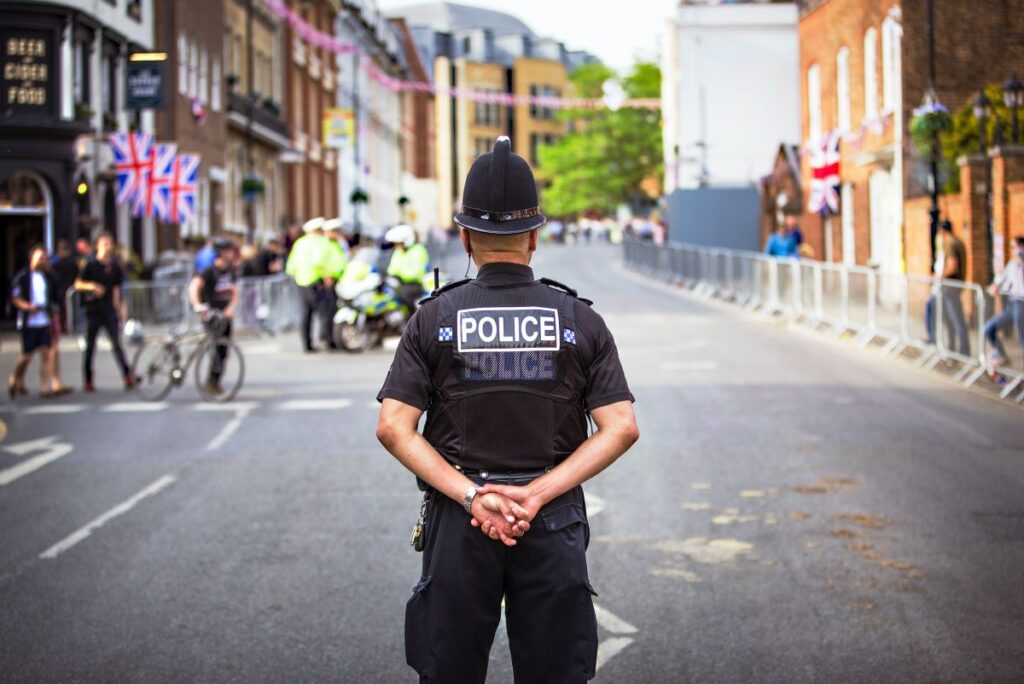
Amidst the many alarming headlines that the coronavirus pandemic has brought were reports that cases of revenge porn ‘surged’ during the first national lockdown (Criddle, 2020). ‘Revenge porn’, also called non-consensual pornography, image-based sexual abuse, sexually explicit media abuse, or non-consensually disseminated sexually explicit media (NCDSEM), is defined as ‘sharing private sexual materials with intent to cause distress’ (Gov.uk, 2015). Between 4% (Eaton et al., 2017) and 5% (Pacheco et al., 2019) of people are thought to have been victims.
Previous research has examined the effects of revenge porn on mental health (e.g. Kamal & Newman, 2016; Beechay, 2019), but with one exception (Bates, 2017), there is a paucity of research which uses survivors’ own narratives. Campbell et al. (2020) do just that in examining the interplay between revenge porn and social anxiety. The authors define social anxiety as ‘marked fear or anxiety related to one or more social situations in which scrutiny by others is anticipated’ (APA, 2013 as cited in Campbell et al., 2020:3).

This study uses survivors’ own narratives to examine the interplay between revenge porn and social anxiety.
Methods
The research methodology was qualitative: specifically, semi-structured interviews were used. Participants were recruited by advertisements on the social media accounts of the non-profit organisation Battling Abusive and Demeaning Selfie Sharing (BADASS). Prospective participants’ eligibility was checked over the phone and, if eligible, participants were read a consent statement and interviewed immediately. During the interview, ‘participants were asked to recount the details of their experience of
- having sexually explicit photos or videos of themselves shared
- what they did in response to the incident
- what health and other consequences they experienced
- what outcomes they wish to see come from their experience’ (:6).
Interviews were transcribed in real-time in order to avoid audio-recording and ensure anonymity. The authors state that ‘all materials and procedures were reviewed by the Boston University Medical Campus Internal Review Board (IRB) and determined to be exempt’ (ibid.:5).
Interviews were coded using the software package NVivo in addition to researchers generating codes corresponding to broad, then specific, themes. Codes were subsequently applied to transcripts, independently, by two individuals who, initially, applied codes to two of the transcripts to ensure concordance. The inter-rater reliability is stated as 91%. The coders discussed any discrepancies until agreement on a code was reached.
Results
The authors found that participants (n=17), who were all survivors of NCDSEM, ‘experienced social anxiety’ (ibid.:16) in five domains. The first of these concerned going out in public, with participants worrying ‘that “everyone” had seen their photos, and were unfavourably judging them, which felt humiliating’ (ibid.:9).
Secondly, difficulties engaging in relationships were present in nearly all participants, with many reporting that ‘they became isolated and withdrawn following their NCDSEM experience, or that they stopped trying to meet new people and make new friends’ (ibid. 10).
The third theme concerned participants’ jobs, with some reporting having lost their jobs after their employers had seen photos or videos of them online. Survivors’ experiences affected their willingness to apply for new jobs too: they often worried that prospective employers would search for their name prior to interview, to be met with their photos/videos.
The fourth theme related to participants’ reluctance to seek help after being victim to NCDSEM. Some participants described being blamed by friends, family, police officers, and attorneys for ‘consensually taking or sharing the photos with trusted partners in the first place’ (ibid.:12). Following on from this, 41% of participants in the study had not taken legal action against the perpetrator(s).
The final theme from the study was that participants ‘described feeling depressed and anxious because of the NCDSEM incident(s)’ (ibid. 12).
![Participants ‘experienced social anxiety related to going out in public, engaging in relationships, applying to jobs, and engaging in help-seeking behaviours and [...] these experiences overlapped with feelings of depression and generalized anxiety’.](https://www.nationalelfservice.net/cms/wp-content/uploads/2020/12/2-2-1024x682.jpg)
Participants ‘experienced social anxiety related to going out in public, engaging in relationships, applying to jobs, and engaging in help-seeking behaviours and […] these experiences overlapped with feelings of depression and generalized anxiety’.
Conclusions
Themes emerging from participants’ interviews suggest that being a victim of revenge porn ‘may influence whether and how’ victims ‘subsequently socialize with other people’ (ibid.:1). As such, ‘NCDSEM may influence social anxiety and social isolation in survivors’ (ibid.:13).

‘NCDSEM (non-consensually disseminated sexually explicit media) may influence social anxiety and social isolation in survivors’.
Strengths and limitations
This study is novel in that it is the first to examine both social isolation and social anxiety in survivors of NCDSEM. In utilising semi-structured interviews, it illuminates participants’ lived experience well. However, I would like to have seen more explicit justification for the choice of research design from the authors as well as some discussion of the researchers’ own positionality and potential biases vis-à-vis formulating the research questions, data collection, recruitment, and data analysis.
Since participants were socially anxious, telephone interviews were a more accessible choice than face-to-face encounters. However, it has been proposed that fear of using the telephone is a form of social anxiety in itself (Marshall, 1995). Thus, the sole use of telephone interviews may have introduced selection bias.
The researchers note that they used the term ‘revenge porn’ in recruitment advertisements, owing to its common usage in the public domain. Yet, they are aware of the term’s inability to describe the myriad motivations behind NCDSEM as well as the connotation that ‘the victim has done something wrong to warrant vengeful behavior’ (Campbell et al., 2020:15). Deploying this term may therefore have introduced selection bias in that participants ‘may have been disproportionately those with a particular type of NCDSEM experience’ (ibid.).
While multiple testimonies were used to support each of the five themes discussed in the paper, it is unclear whether these were the only themes which arose from participants’ testimonies, or whether they were a sample of a larger set of themes. Saturation of data was not discussed; the authors state that their findings are not representative or generalisable.
My main critique is that the paper does not lend enough discussion to Social Anxiety Disorder (SAD). The authors draw on the American Psychiatric Association’s diagnostic criteria for SAD in providing a short definition of ‘social anxiety’, but SAD is only mentioned again, briefly, in the conclusion. The study would be strengthened by including a clear statement on whether the authors are considering the diagnostic category ‘SAD’, or the concept ‘social anxiety’, or a mixture. If SAD is being considered (and the invoking of the APA’s diagnostic criteria would suggest that it is), then some engagement with the diagnostic criteria is needed to demonstrate exactly how participants’ testimonies reflect the diagnosis. Deeper discussion of which participants had social anxiety (disorder) prior to their experiencing NCDSEM is also needed.

If Social Anxiety Disorder is being considered, then some engagement with the diagnostic criteria is needed to demonstrate exactly how participants’ testimonies reflect the diagnosis.
Implications for practice
The authors note that ‘a deeper understanding of the social consequences of NCDSEM victimization’ (ibid.:14), which their study provides, ‘may assist advocacy organizations in effectively collaborating with technology industries, legislators, and health care professionals to reduce the burden NCDSEM has on survivors’ (ibid.:14-15). In so doing, they suggest a number of alterations to current practice. These include the provision of clinical psychoeducation for survivors to facilitate recognising social anxiety and isolation as well as learning how to counter them. Attorneys and advocates could also provide survivors with handouts on social anxiety to encourage self-care and clinical care. Physicians to whom experience of NCDSEM is disclosed should consider evaluating their patients for SAD. In-depth assessment is warranted, however, since symptoms overlap with other diagnoses.
Given that nearly half of the study’s participants had not sought legal action against their perpetrators, this raises questions about how easy it is for survivors to report NCDSEM, especially amidst feelings of guilt, shame, and experiences of social anxiety. Shifting entrenched cultural attitudes around victim-blaming is not a quick or easy task, but a good first step might be to provide training to police officers and legal professionals such that reporting NCDSEM, and pursuing legal action against its perpetrators, is made easier.
In my opinion, an appropriate avenue for future research is the interplay between other mental health issues and NCDSEM. Since the authors report that many participants reported ‘a fear of going out in public’ (ibid.:9), there are links to be made with agoraphobia, whose diagnostic criteria include ‘marked fear or anxiety about […] Being outside of the home alone’ (APA, 2013:217). The authors propose that future research should explore NCDSEM and social anxiety in the context of intersecting identities (race, ethnicity, sexual orientation, gender identity, and, I add, class).
Through my own research, women with SAD’s concerns oftentimes centre on their appearance, body, and gendered expectations of behaviour. Being the subject of NCDSEM opens up a whole new dimension to this, compounding these concerns by bringing the very private and intimate into the public and inviting culturally-sanctioned judgement and denigration. Specifically in the case of the women in this study, I cannot help but think that their resulting social anxiety, that is, concern with how others perceive them, while distressing, might in fact be a logical response.

Shifting entrenched cultural attitudes around victim-blaming is not a quick or easy task, but a good first step might be to provide training to police officers and legal professionals such that reporting NCDSEM, and pursuing legal action against its perpetrators, is made easier.
Statement of interests
None.
Links
Primary paper
Campbell JK, Poage SM, Godley S and Rothman EF (2020). Social anxiety as a consequence of non-consensually disseminated sexually explicit media victimization. Journal of Interpersonal Violence 2020 1-21 [SAGEpub abstract].
Other references
American, Psychiatric Association (2013). Diagnostic and Statistical Manual of Mental Disorders (DSM-5®), Washington: American Psychiatric Association Publishing.
Bates S (2017). Revenge porn and mental health: A qualitative analysis of the mental health effects of revenge porn on female survivors. Feminist Criminology 2017 12(1) 22-42 [SAGEpub abstract].
Beechay, S (2019). If I Go There Will Be Trouble, If I Stay There Will Be Double: Revenge Porn, Domestic Violence, and Family Offenses. Family Court Review 2019 57(4) 539-553 [Wiley Online Library Abstract].
Criddle C. ‘Revenge porn new normal’ after cases surge in lockdown. BBC News, 16 Sept 2020.
Eaton A, Jacobs H and Ruvalcaba Y (2017). 2017 Nationwide Online Study of Nonconsensual Porn Victimization and Perpetration [PDF].
Gov.uk. Revenge porn. 3 Feb 2015.
Kamal M and Newman WJ (2016). Revenge pornography: Mental health implications and related legislation. Journal of the American Academy of Psychiatry and the Law Online, 44(3) 359-367 [PDF].
Marshall JR (1995). Social Phobia: From Shyness to Stage Fright. New York: BasicBooks.
Pacheco E, Melhuish N and Fiske J (2019). Image-based sexual abuse: A snapshot of New Zealand adults’ experiences. Netsafe [PDF].
Photo credits
- Photo by Chad Madden on Unsplash
- Photo by Volodymyr Hryshchenko on Unsplash
- Photo by Jacek Dylag on Unsplash
- Photo by Anthony Tran on Unsplash
- Photo by Debby Hudson on Unsplash
- Photo by King’s Church International on Unsplash
